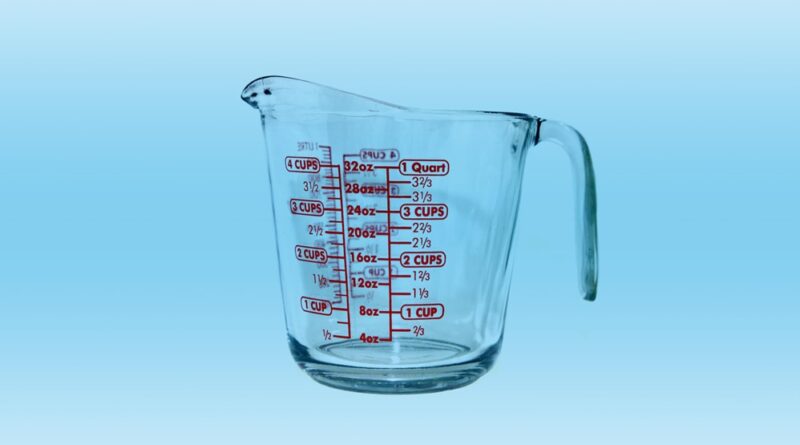How Many Ounces in a Cup Question Answered with Quick Conversion
You’ve probably asked yourself at least once while cooking: how many ounces in a cup?
And if you’re anything like me, you’ve probably asked it multiple times in the middle of a recipe. Usually while something is already boiling over.
Let’s be real—kitchen conversions can get messy. Literally messy, if you’re me. Flour everywhere. Measuring cups half-buried in sugar like tiny archaeological digs. But here’s the fun part: once you get the hang of it, the whole “ounces vs. cups” thing isn’t as scary as it looks.
So, grab your favorite mug (don’t pretend you don’t have that one weird chipped one you refuse to throw away), and let’s finally tackle this question head-on.
Why People Always Ask: How Many Ounces in a Cup?
I swear this question is like the mosquito of cooking. Buzzing around constantly: how many ounces in a cup?
Why is it so confusing?
Because depending on what you’re measuring, the answer changes. Liquids? That’s one thing. Flour? Sugar? Totally different ball game.
I once thought one cup of rice magically equals one cup of water. Nope. Ended up with a mushy rice soup situation that my brother still makes fun of me for.
Quick Answer for Liquids
- 1 cup of liquid = 8 fluid ounces
- ½ cup = 4 fluid ounces
- ¼ cup = 2 fluid ounces
Super simple, right? But here’s where it gets weird. That’s only for fluid ounces. When you’re talking about weight (like dry ingredients), ounces don’t line up perfectly with cups.
And that’s usually when people sigh and Google: how many ounces in a cup?
Dry Ingredients and the Big Confusion
Okay, so here’s the deal: 1 cup of flour doesn’t weigh the same as 1 cup of sugar. Which makes sense, but somehow always surprises me.
- 1 cup of flour is about 4.5 ounces
- 1 cup of sugar is closer to 7 ounces
- 1 cup of butter is 8 ounces (because butter just plays by its own rules)
This difference is exactly why some cakes rise beautifully and others collapse like a bad soufflé. Been there. I once baked brownies so dense they could’ve doubled as paperweights.
So when you ask how many ounces in a cup?, you have to also ask: “What kind of stuff am I measuring?”
A Funny Old Fact
Back in the 1800s, some cooks literally measured flour with teacups. Like actual dainty teacups from their cabinets. Imagine trying to make bread when everyone’s cup size was different. No wonder people in history looked grumpy in photos.
How I Messed It Up Personally
I remember being twelve and trying to bake chocolate chip cookies alone. The recipe said “1 cup of flour.” I thought, hey, one mug should do it.
Spoiler: it didn’t. That batch came out looking like sad pancakes. My dad ate them anyway, bless him.
That’s why now, every time I see the phrase how many ounces in a cup?, I laugh a little. It’s basically the universal kitchen panic button.
Handy Conversion Guide
If you’re the list type (I’m usually not, but here’s a cheat sheet anyway), this’ll help when you’re elbow-deep in baking:
Liquids
- 1 cup = 8 fluid ounces
- ¾ cup = 6 fluid ounces
- ½ cup = 4 fluid ounces
- ¼ cup = 2 fluid ounces
Dry Stuff (approximate, because it depends how packed it is)
- Flour: 1 cup = 4.5 ounces
- Sugar: 1 cup = 7 ounces
- Brown sugar (packed): 1 cup = 8 ounces
So yep, asking how many ounces in a cup? doesn’t give you one tidy answer. But it gets you in the right ballpark.
Why Ounces Can Feel Like Math Class
Here’s the thing—I was terrible at math. Numbers bored me unless they came with food attached. Suddenly fractions mattered when I wanted extra fudge brownies.
That’s why conversions feel like school sometimes. ½ cup = 4 ounces, ⅔ cup = something else, and I’m just standing there staring at a measuring spoon like it’s going to whisper the answer.
Ever notice how recipes written by grandmas never have ounces? Just “a handful” or “a pinch.” Honestly, I trust that more sometimes.
The Shortcut Method
If you don’t want to keep asking how many ounces in a cup?, here’s a lazy trick I use:
- Remember liquids are always 8 ounces per cup
- For dry, check the bag — they almost always give you cup-to-ounce conversions
- And when in doubt? Weigh it. Kitchen scales are underrated heroes
I fought buying a scale for years, thought it was “too professional.” Turns out it saves so many disasters.
Odd Kitchen Comparison
I once read that one cup of popcorn kernels makes about 8 cups of popped popcorn.
So if you ask me how many ounces in a cup? while holding popcorn, my brain goes: “enough to annoyingly get stuck in your teeth for three hours.”
Not helpful, but true.
Cups Around the World
Here’s where it gets even stranger. Not every country agrees on cup sizes.
- US cup = 8 ounces
- UK cup = 10 ounces (ish)
- Metric cup = 250 ml (closer to 8.45 ounces)
So you could literally travel and ask how many ounces in a cup? and get different answers. Which explains why some international recipes feel cursed when you try them at home.
I once tried a French recipe that asked for a “coffee cup” of milk. That was the entire direction. I don’t even drink coffee, so I just guessed. Bad idea.
Me vs. Measuring Cups
Confession: I lose measuring cups constantly. They vanish like socks in the dryer. One time I found my ⅓ cup in the dog food bin. Don’t ask.
So half the time, I’m doing “cup math” in my head. Which is how I keep looping back to the eternal: how many ounces in a cup?
Sometimes I write it on sticky notes and stick it to the fridge. Other times I forget and just wing it. Winging it works for chili. Not for cake.
Historical Oddity
Here’s a wild one: ancient Romans didn’t use cups or ounces. They used a unit called a sextarius. Imagine asking your friend, “Hey, how many sextarii in a cup?” That’d get weird looks fast.
Kinda makes me grateful for our modern messy system. At least we agree on spoons. Well… most of the time.
My Lazy Conversion Trick
You know when you’re too tired to Google how many ounces in a cup? again? Here’s what I do.
I grab the same glass every time. I know it holds exactly 2 cups of liquid because I measured once. Now I use that as my baseline. Super low-tech. Wrote this paragraph by hand. Then spilled coffee on it. Classic.
When It Really Matters
Most of the time, being a little off doesn’t ruin things. A soup or stew can handle some wiggle room. But baking? That’s science in disguise.
If you’re off by an ounce in flour, your cake might sink. Off by an ounce in butter, your cookies might spread into sad puddles.
So yeah, asking how many ounces in a cup? is basically a way of saying, “I don’t want to ruin dinner tonight.”
Wrapping It Up (Finally)
I’ve asked this question a hundred times. You probably have too. Because how many ounces in a cup? isn’t just about numbers. It’s about the little panic moment in the kitchen, the laughter when it goes wrong, and the relief when it goes right.
To sum up in plain speak:
- 1 cup liquid = 8 ounces
- Dry stuff varies, so check each ingredient
- Different countries use different cups
- And if all else fails, a kitchen scale will save your life
Honestly, I still think the best measuring tool is your gut. And maybe your grandma’s pinch. But hey, at least now you’ve got the quick conversion answer ready the next time the question pops up.




